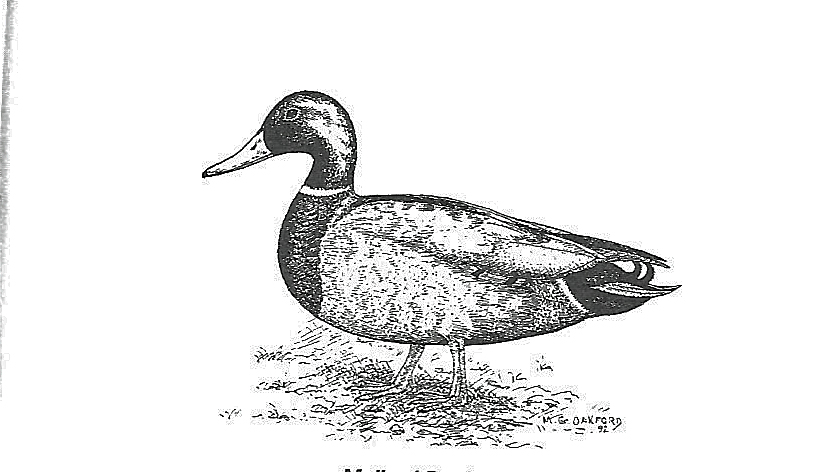 |

|
Currently there are no events or updates to display. |

So.. What About the Mallard? So… What About the Mallard?By Lou Horton
As most of my readers undoubtedly already know, every breed of domestic duck with the exceptions of the Muscovy, Mandarin, and Wood Duck which is included in either the APA or ABA Standards is descended from Anas platyrhynchos more commonly called the Mallard Duck. They are actually included in both Standards of Perfection in the category of bantam ducks. Why the APA did not get around to including the Mallard in their Standard until the early 1960s, I do not know. So if the Mallard is part of both Standards, why is it so often ignored when champions are chosen? Perhaps it is because in many parts of the country, actual exhibition quality Mallards are quite uncommon. Really good Mallards have been found regularly at shows on the West coast for decades, thanks to the efforts of a few dedicated breeders. They are also seen in shows in Minnesota and Iowa, again, thanks to a small number of devoted breeders. In most areas of the country, Mallards entered in shows are oversized products of crosses with so-called domestic Mallards. Such birds lack type and carriage in addition to being oversized. In many parts of the country, it would be possible to evaluate an entire flock of hundreds of wild Mallards and not find more than a few which would conform even moderately to the description of the Mallard found in either of our standards. It is equally difficult to find quality Mallards at many shows but that seems to be changing, at least in the Midwest. This past show season, I found Mallards at shows in Illinois, Minnesota, and Iowa that deserved serious consideration for Champion Bantam Duck. In all of those cases, I cannot say for sure that they got a second look. That would be unfortunate since in my opinion, everyone who puts in the effort to show birds of high quality no matter the breed deserves to have their birds considered for higher awards if the quality justifies that consideration. Before I close, I would like to point out some qualities possessed by an exhibition Mallard that one should look for. First, there is the matter of size. Both standards set the size of the heaviest class of Mallards (the old males) at 40 ounces which is just 10 ounces above that established for the Call old males. Another common problem with Mallards seen at even the largest shows is carriage which should be horizontal. Many Mallards display elevated carriage in the front common in the utility Rouen and barnyard Mallard.” Cotton” (white) at the juncture of the steel gray and black at the tail of the male in nuptial plumage may be a fault in the Rouen or Gray Call but it is a feature of the authentic exhibition Mallard. In the ABA Standard, specific mention of the white line at the stern is omitted in the written description (a mistake) but is present in Graham Oakford’s excellent drawing of the male. In the APA Standard, the written description includes mention of it but the picture does not illustrate it well.
This drawing of a Mallard drake by M.G. Oakford is better than most pictures presently available in the two Standards of Perfection but it is featured in the ABA Standard. Note the level carriage and almost flat underline. Last but not least, one of the signature characteristics of the exhibition Mallard is the shape and length of the bill. The bill should be long, relatively narrow, and the top line should be a bit concave. In any other breed of duck, such a top line would be considered a disqualification and referred to as a “dish bill” but it is a distinctive characteristic of an exhibition Mallard. Originally published: 01-04-2017Last updated: 03-02-2018 |
Copyright © 1997 - 2025 Acorn Hollow Bantams. All Rights Reserved. | Terms of Use | Privacy Policy


